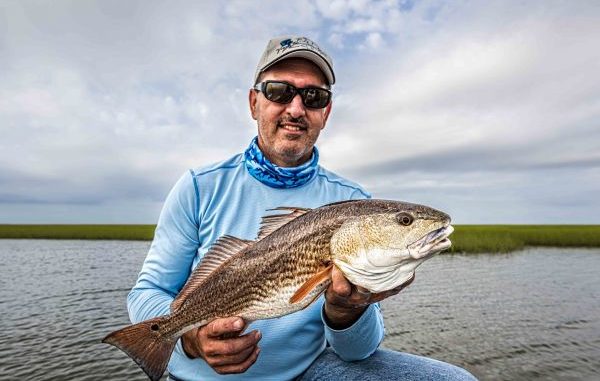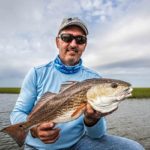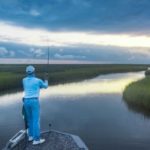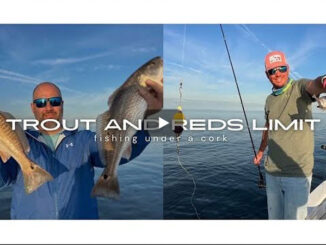
High water allows access to interior ponds
Last week’s torrential downpours couldn’t stop the redfish action in the Pointe-aux-Chenes marsh. In fact, the stiff westerly winds backed up the water, making it even easier to get to the fish.
“I never fish when the water is this high,” said Denham Springs angler Darren Cooper, who owns a camp minutes from Pointe-aux-Chenes Marina. “When it’s high, I usually stay at that camp.”
He was happy he did’t sleep in by the time he returned to the launch Saturday.
After he and I made the run south to our first stop just northeast of Lake Chien, we found the bayou we planned to fish dirty.
The water was sky high, and we feared the reds would be so far back into the grass they would be inaccessbile.
We moved to a cove on the north shore of Lake Chien, where the water was gorgeous. It didn’t take long for Cooper to sink the hook into the first red — a beautiful fish that would have been the perfect start to the morning. Unfortunately, the red came unzipped.
But it proved redfish were patroling the banks, even though we could hear reds sloshing around in the flooded grass.
That cove produced one fish for the box before we moved on.
Just south of us, birds could be seen picking, and two boats made stops to catch a few trout.
Cooper, who couldn’t care less about trout, decided to head back into the marsh — while I looked forlornly at the certainty of specks in the lake.
But the move was the right one, and we soon were far deeper in the marsh than Cooper had ever been able to get.
“The water is usually 4 inches deep right here,” he said as we trolled through the mouth of a trenasse. “I can’t believe how high the water is. We usually catch refish on this flat.”
We spent most of the day moving from pocket to pocket along that winding ditch, building up a nice box of redfish.
The pattern for success soon developed: A nice breeze was blowing, and redfish were working the calmer water on the lee shorelines.
And they were shallow, which made for some awesome fights.
Cooper used a plain jig rigged with a ghost/chartreuse soft-plastic cocahoe, while I stuck with a similarly colored plastic on a spinnerbait.
Both lures produced fish, but the spinner was a tad more effective at convincing reds to commit from distances.
“They definitely come from farther away to hit that,” said Cooper, who admitted he never uses a spinner when redfishing.
Many of the fish we caught were located before the cast, with their signature wakes giving them away. A few were actually sighted — as in, we could SEE the fish swimming before pitching baits to them.
Sight-fishing reds is what really gets Cooper on the water, and he would often just troll the banks without casting in hopes of seeing a bronze fish. But thick clouds made it difficult to peer through the water, even using quality polarized glasses.
The highlight of the day came when we rounded a corner to a pocket and saw a big redfish wallowing around in inches of water, its back and wide tail breaking the surface.
“Look at that!” Cooper said as I rocketed my spinner past the fish.
It seemed like a perfect cast, but the angle was wrong. Instead of the retrieve bringing the lure in front of the huge red, the spinnerbait headed straight for the tailing fish.
The water exploded, and I anticipated a huge whack, but the redfish was apparently scared by the flashy bait that seemed to be charging it. The big fish headed deeper in the pond, pushing a wake like a Triton submarine.
We ended the day two reds short of our limit — but it wasn’t for lack of bites. We lost three or four nice reds, but we were satisfied with the morning of wrestling redfish in shallow ponds.
The lesson was clear: Don’t let high water keep you at the camp. Just move deeper into the marsh, where redfish are waiting.
As to those trout, there aparently were plenty to be had in Lake Chien — but you had to weed through the schoolies to box some specks for the freezer.
“We kept about one of every three or four we caught,” said Gonzales’ Danny Lemoine, who had boxed a number of specks before turning to redfish.




